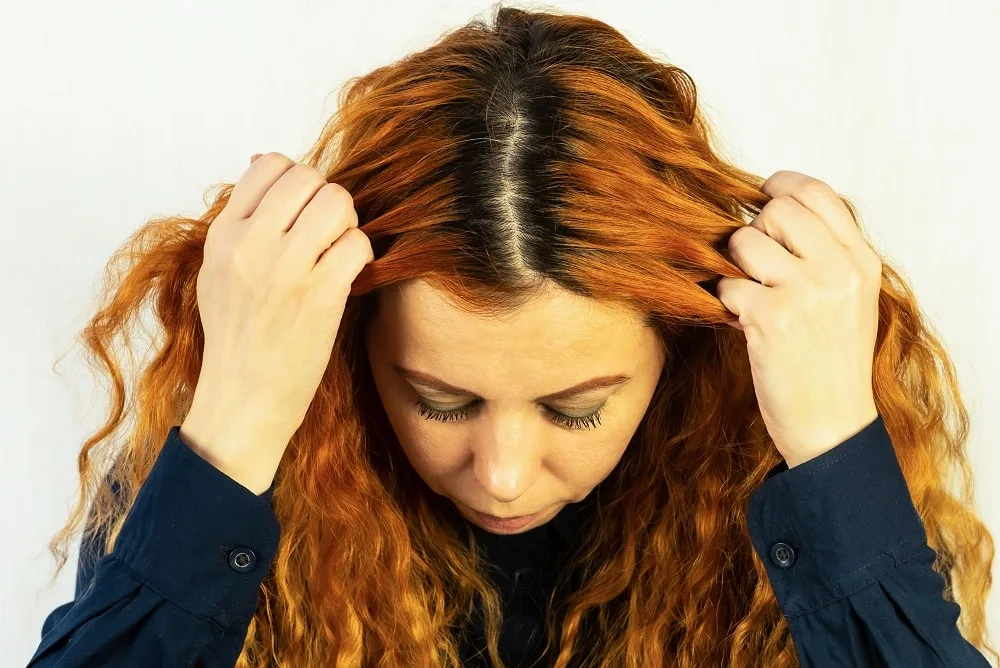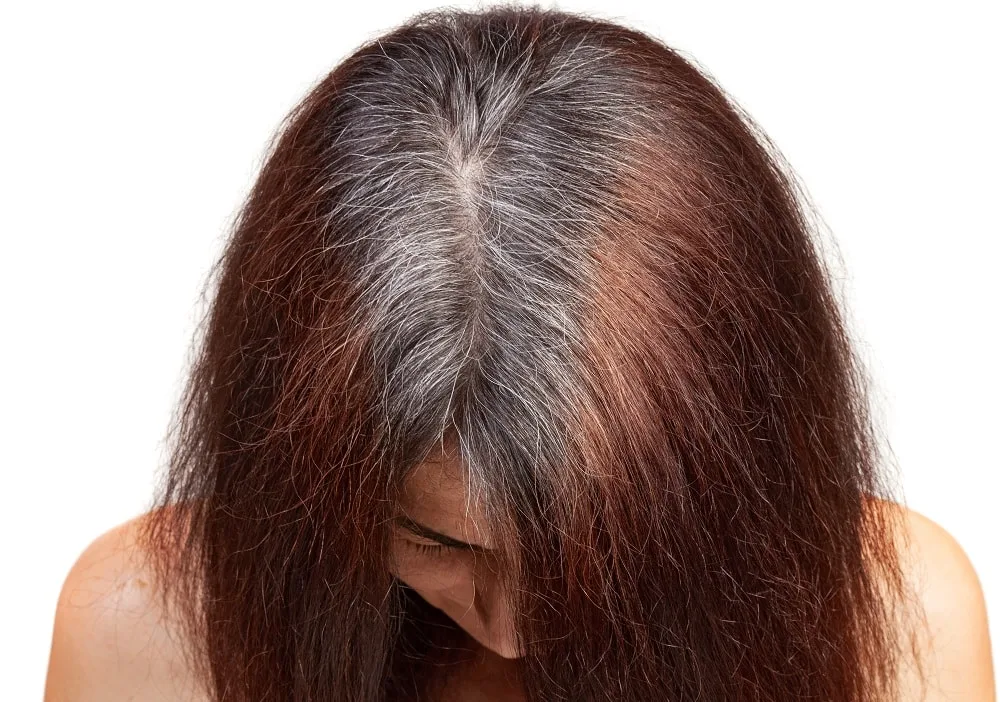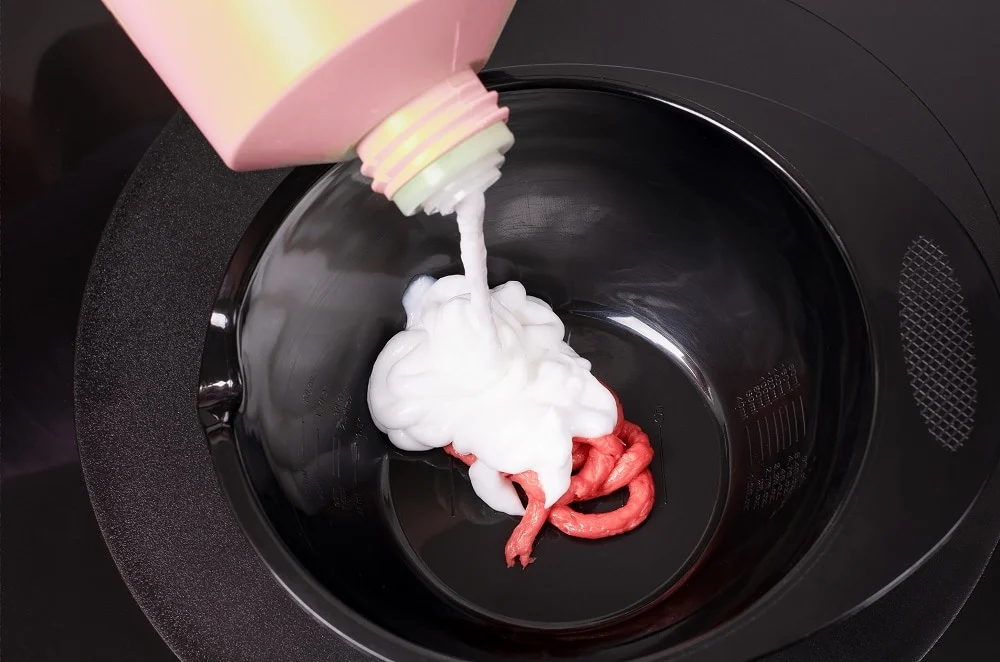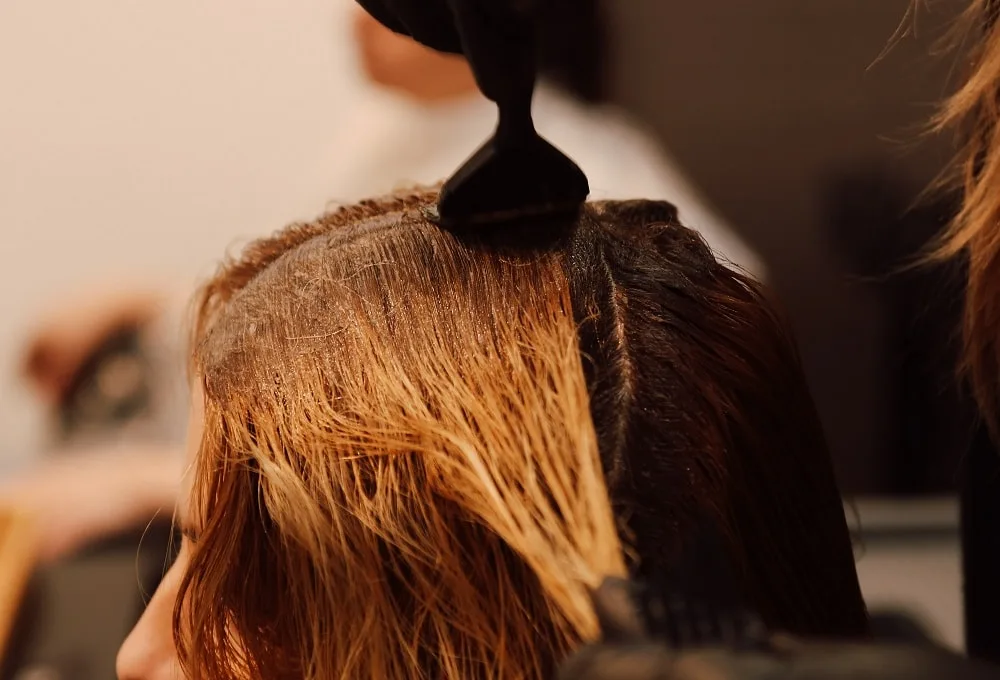Retouching roots is an essential maintenance practice for people with color-treated hair. But what do you do when your roots don’t take color? First, you must understand why your roots won’t take color before you can apply the best solution.
Why Are My Hair Roots Not Taking Any Color?
Your hair roots won’t take color because of the following 7 reasons:
- You have virgin hair
- You left the dye longer
- Your roots are gray
- Your hair is too greasy
- You used the wrong developer
- You used an inadequate amount of dye
- You used an improper application technique
Touching up your roots is a vital maintenance routine for colored hair. It keeps your hair looking even from the roots to the ends. It also prevents the unsightly demarcation mark from new growth since the last coloring.
While touch-ups maintain the consistency of your hair color, sometimes your roots may not be taking up color as expected for several reasons.
#1. You Have Virgin Hair

If you’re trying to color new hair growth, it might not take color readily. Virgin hair is undamaged and strong. It can resist damage for an incredible time, even when using demi-permanent and permanent hair dye, which works by opening up the hair cuticle.
Virgin hair has a stronger cuticle, making it harder for the dye to open up the top layers to deposit color. You may have to leave the dye in longer or color your roots multiple times to allow the color molecules to penetrate and hold.
#2. You Left the Dye in Too Long
Why do my roots not take color after I leave the dye longer in my hair?
Sometimes, leaving the hair dye longer allows hair to take on color better, especially when dealing with virgin roots. However, never leave permanent dye for more than 45 minutes or more than 20 minutes for semi-permanent hair dye.
A common myth that leads people to leave dye longer in their hair is the belief that the results will be better.
The truth is that leaving dye for too long dries and damages your hair. The color might also be dull and patchy in some cases.
#3. Your Roots Are Gray

Your graying hair could be the reason roots not taking color. Gray hair is notorious for resisting color, particularly the roots. The changing texture is the primary reason gray hair rejects color.
As you age, you produce less oil, resulting in coarse hair. Coarse hair has a hard time absorbing color, especially demi and semi-permanent hair dyes. It’s even harder to color roots if your gray hair has oils, creams, or dry shampoo.
#4. Your Hair Is Too Greasy
Greasy roots won’t take color. Oils form a protective layer on your hair, preventing the dye from penetrating the hair cuticle. Besides not taking color, greasy hair can interfere with the coloring process, especially when trying to cover gray roots.
It’s always advisable to wash your hair a few days before a dye job. The timing, however, depends on how oily your scalp gets.
#5. You Used the Wrong Developer

A developer is essential in activating the hair dye. Without the correct type of developer, your roots will not take the desired color.
Most box dyes come with the right type of developer as part of the package. However, when buying your dye and developer separately, you must decide whether you want to go lighter or darker.
A strong developer of volume 30-50 is ideal when trying to color your roots lighter. On the other hand, a 10-volume developer is the best choice when you’re going darker.
For gray hairs, the 20-volume developer is the best choice whether you’re going darker or lighter. This developer helps overcome the resistance to color that gray hair exhibits.
#6. You Did Not Use Adequate Dye
Your roots will only take color if you use an adequate amount of dye. When coloring your roots, the dye must be enough to fully saturate each strand of your hair.
You could have also mixed the wrong quantities of dye and developer, resulting in patchy results. In most cases, manufacturers recommend a 1:2 mix of dye and developer.
If you use too little developer, the dye will be too dry and incapable of dyeing your roots. Using too much hair developer could result in a runny solution that doesn’t deposit color as expected.
#7. You Used the Wrong Application Technique

Using the right dye and developer is crucial in achieving the desired color results on your roots. However, you won’t achieve the desired outcome without the proper root touch-up technique.
Dyeing your roots is not about randomly placing the product on your hair. It involves methodically applying the dye to all the hair around your head, ensuring each strand is saturated with the dye and developer mix.
The right approach when dyeing your roots involves the following:
- Sectioning your hair into a minimum of four sections. You can go for more segments if you have more hair.
- Applying the dye directly to the roots of the hair first. When retouching your roots, starting with the roots allows for more processing at the roots. You can then blend the color with the midsection and ends.
- Leaving in the dye for the recommended time
- Rinsing out the product from your hair thoroughly after processing
How To Fix if My Hair Roots Don’t Take Color
Now that we’ve answered your question on why your roots won’t take color, the next thing is how to fix the problem.
Follow these tips when fixing roots that don’t take color.
- Apply nourishing treatments to your hair, especially if you’ve recently bleached your hair. Protein fillers and cuticle-repairing oils are great at restoring your hair’s health.
- Prepare your hair before dyeing it by washing it 48 hours before the dye job. Hot oil conditioning a week before is also a good idea before coloring.
- Follow the manufacturer’s instructions on how to mix the dye, what developer to use, and the processing time for the best results when retouching your roots.
- Choose the right hair color. Go for hair dyes made explicitly for root touch-ups.
- Use root coverage powders or sprays and temporary root concealer products to cover your roots as you wait to visit a professional colorist to touch up your roots.
- Visit a professional hair stylist for root touch-ups. A professional knows what they’re doing and will help you avoid the problems DIY root touch-ups bring.
Should You Dye Your Roots First or Last?
Always dye your roots first when doing a touch-up. Hair processes faster near the roots due to the heat from the scalp.
Colorists often start coloring from the midsections to the ends when dyeing virgin hair. However, when touching up, the roots are usually darker than the rest of the hair. Therefore, they will need a longer processing time to achieve the color of the midsections and ends.
How Long To Leave Hair Dye on Your Roots?
You can leave hair dye on your roots for 30-45 minutes. If you use heat during the dyeing process, cut the time by half to prevent damaging your hair and irritating your scalp.
You should not rinse the dye before 20 minutes as the dye and developer might not have had enough time to work on your roots. It could also leave you with uneven results.
On the other hand, you should never exceed 45 minutes as the chemicals in the dye may start damaging your hair by drying it out.
Touching up your roots is a must-do for every person with color-treated hair. And it can sometimes be frustrating when your roots won’t take color after a dye attempt. When this happens, identifying the reason behind it can help you fix the problem and save yourself a lot of frustration.
